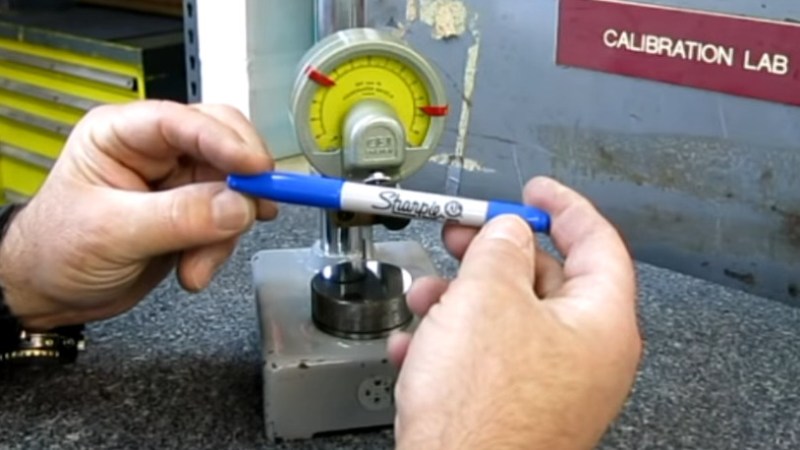Community, Leadership, Experimentation, Diversity, & Education
Pittsburgh Arts, Regional Theatre, New Work, Producing, Copyright, Labor Unions,
New Products, Coping Skills, J-O-Bs...
Theatre industry news, University & School of Drama Announcements, plus occasional course support for
Carnegie Mellon School of Drama Faculty, Staff, Students, and Alumni.
CMU School of Drama
Tuesday, April 21, 2020
Measuring Sharpie Thickness… The Ink Itself, Not The Pen!
Hackaday: How we missed this one from a few years ago is unknown, but we’re glad to catch up with it now. Have you ever needed to measure how thick the ink in a Sharpie line is? Of course you haven’t. But if you needed to, how would you do it? Using a wicked-sensitive indicator gauge and levering an interesting test setup.
Subscribe to:
Post Comments (Atom)

3 comments:
Why would anyone ever need to measure the thickness of a marker line this presciesley. I could tell you that a normal width sharpie line is probably around 1/16th of an inch and I can see how that measurement is relevant but why would anyone need to know the thickness or height of this. Also now knowing that a black and blue sharpie has a different size, this makes me wonder why. Does the type of pigment present change it to where it doubles in size? I do appreciate how this article literally starts by saying why would you ever need this, but yet they still did it. I also really like how it includes a video showing their entire process. Although the video is a tad bit long coming in at around ten minutes, that is still a little bit long for my attention span which is that of a fish sometimes.
Machining is WACKY sometimes. This at first may seem like the musings of someone going crazy in quarantine, however I have to admit I do see a little bit of value here (call me crazy I know). Machining is all about precision, so understanding how precise a measurement is plays an important role in the process. I've seen sharpies and layout fluid used many times to check for surface smoothness or concentrically on a lathe part. say, for example, you have an internal hole in a part and you plan on using a boring head to bring that hole to finish tolerances. Putting some sort of layout fluid or sharpie mark inside that hole will not only tell you when the cutting edge makes initial contact, but can indicate how centered the hole is. If it is too far to one side, it will naturally cut there first, which would remove that sharpie or layout fluid. Here, you would see half the hole covered in your marking, indicating you're off by a certain amount. Granted, none of these markings are going to tell you exactly how many microns off you are, but I'm certainly glad to know that a sharpie leaves a thinner mark (and the colors are a bonus too)!
This is one of those things that you just have to ask "why?". Why would anyone really need to know the thickness of a Sharpie line. While I understand what Elliot is saying about how precise machining is, I am still not sold on the thickness of a Sharpie mark mattering that much. Maybe it is because I have not been asked to be that precise yet, or that I have never worked in a tire machining shop, or maybe its because my roots are in woodworking, where being too precise doesn't matter as much. Whatever it is, I am not sold. That all being said, its cool I guess. The best part of this video is watching him to do it. While I may not care about his answer, watching how he got to it definitely taught me a lot about machining, working with metal, and the precision of machining overall.
Post a Comment